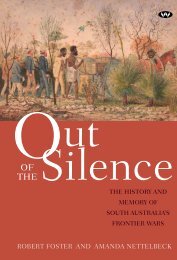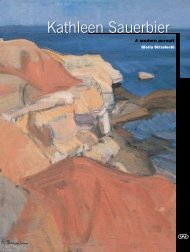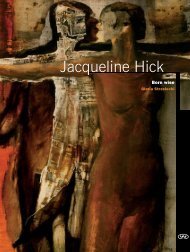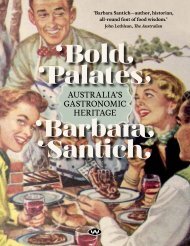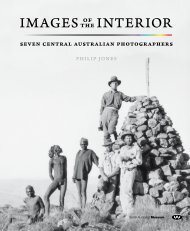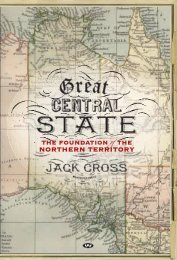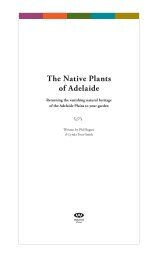bruce munday - Wakefield Press
bruce munday - Wakefield Press
bruce munday - Wakefield Press
- No tags were found...
You also want an ePaper? Increase the reach of your titles
YUMPU automatically turns print PDFs into web optimized ePapers that Google loves.
‘No you won’t!’ she said. ‘That was your practice wall. If you think you can now do better, buildanother one.’It is difficult to appreciate dry-stone walls until you have built at least one. An eye for a nice stonein the paddock, the satisfaction in unearthing a mini-quarry, the grunt of lifting and placing, the Zento accept that this hard-won piece really won’t do and to replace it with another, * and admiration forother works. These are all part of the love affair with stone.At the end of your first day of wall building – lifting rock, twisting vertebrae, crushing fingers –you survey your efforts and despair: ‘Is this all I’ve done?’ But day one is nothing. Day two your handsare sore, week two you walk with a stoop and you might be thinking, This is bad for my health.Of the many folk who have helped me gather material for this book, those most switched on havealready built a wall or two, restored a wall, or at least attempted one of the above. Walling really isabout learning on the job. Stones are not bricks, no two are the same and no one stone looks the samefrom every angle. Nor are all wallers the same, but the one thing most have in common is that theyare short people. They might not have started short, but that’s how they finish. †There is lots of stone where we have lived these past thirty-eight years. The Kanmantoo Systemis a band of schist outcropping across the Eastern Mount Lofty Ranges from about Wistow throughHarrogate, Tungkillo, Springton and Keyneton to Truro. The rock is a host to lichen and the combinedproduct has earned some fame (or notoriety) as ‘moss rock’ that is used and abused as a landscapingfeature in mainly newer suburbs of Adelaide.One-hundred-and-fifty years ago much of this stone was used to build the first dwellings, shedsand fences throughout the district, simultaneously providing shelter and containment whilst clearingthe land of some of the obstacles to farming. Many of the structures are still in use today, providingenduring insights to lives of the early settlers and at the same time displaying the marvellous stonearchitecture that so characterises much of South Australia.We bought Dairy Springs, about midway between Mount Torrens, Tungkillo and Harrogate, in1974; or at least we bought part of it. In those days we could not afford the eastern-most sectionwhich had about a kilometre of stone wall. To be honest the wall didn’t mean much to us back then.But we did think the stone buildings looked pretty, salt damp and all.The core of our house was four rooms built from local stone, while out the back was a two-room(three if you count the loft) stone cottage from which operations commenced in 1896. Over the years,functional but ugly extensions were grafted on and the verandah bricked in to make another room.We had the sense that stone was very much a part of this place but that it was unloved. As everyposthole I dug hit rock, and too often my ute would hit one in the paddock, I could understand howthe early settlers might have had a jaundiced relationship with the local stone.Time passes and one finds use for what is at hand. Flagstones carted back from the paddockscreated paths where needed – and after a while, where not really needed, supply exceeding demand.* Something no serious waller would contemplate – the craftsman, having picked up a stone will not put it down until a place for it is foundin the wall.† A notable exception is the almost legendary Scott Wilson on Kangaroo Island. At six foot five inches in the old money, Scott has such aniconic Aussie style about him that I suspect he will somehow continue to defy gravity where so many before him have failed.8 THOSE DRY-STONE WALLS



